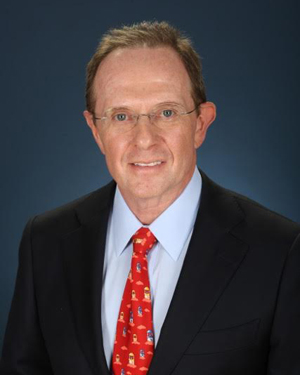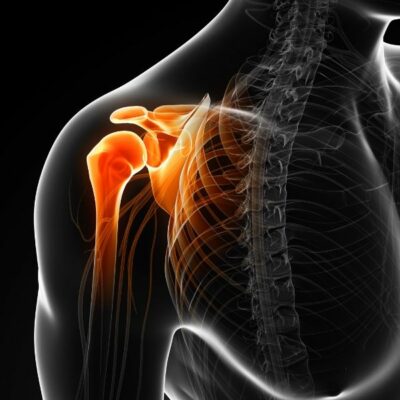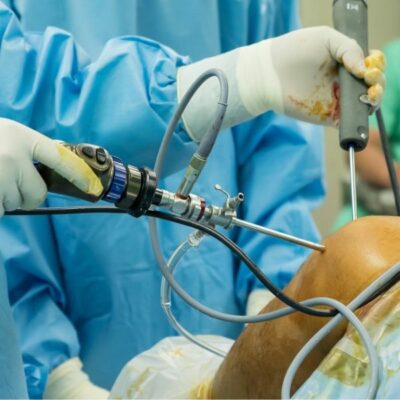Rotator Cuff Surgeon

Are you an athlete who participates in sports that involve throwing overhead? If so, you may be at risk of developing a rotator cuff injury. The rotator cuff can become damaged from repetitive overuse, a sports injury, a fall or degeneration of one of the tendons. Rotator cuff surgeon, Dr. James Mazzara provides diagnosis and both surgical and nonsurgical treatment options for patients in Manchester, South Windsor, Enfield, Glastonbury and surrounding Hartford communities who have developed a rotator cuff injury. Contact Dr. Mazzara’s team today!
What is Arthroscopic Rotator Cuff Repair?
The rotator cuff is a system of tendons and muscles located within the shoulder joint. These muscles and tendons surround the shoulder, giving it stability and an incredible range of motion – more motion than any other joint in the body. The rotator cuff is responsible for holding the ball in the joint at the shoulder. An injury to the rotator cuff can range from mild inflammation of the tendon, to a partial or complete tear. Arthroscopic rotator cuff repair, also called minimally invasive surgery, is typically required in cases that involve a partial or a complete tear. Dr. James Mazzara, orthopedic shoulder surgeon, serving the Manchester, South Windsor, Enfield, Glastonbury and surrounding Hartford communities offers this rotator cuff repair treatment to return patients to the work and sports activities they love.
When the muscle attaches to the bone, called the insertion point, the muscle changes its name and is called a tendon. Muscles move the bones by pulling on the tendons. These tendons can become damaged or tear. Since a partially or completely torn tendon is unable to repair itself, Dr. Mazzara may recommend arthroscopic rotator cuff repair.
Shoulder arthroscopy surgery uses a tiny camera called an arthroscope which is placed inside a small incision in the shoulder. Small, thin surgical instruments are also used to examine and repair the torn rotator tissues inside the shoulder joint. Arthroscopic rotator cuff repair is not only less invasive, it also reduces the risk of post-operative complications such as infection, muscle stiffness and muscle injury. It is different than “open surgery” in that Dr. Mazzara performs the surgery inside the shoulder without opening the shoulder with a long incision.
What Happens During Rotator Cuff Arthroscopy?
Rotator cuff arthroscopy is usually done under general anesthesia with a nerve block that numbs the arm for several hours after surgery. The patient is placed in the beach chair position (sitting up) by orthopedic shoulder surgeon James Mazzara, MD. His team of specialists take great care in positioning the patient correctly for this procedure. A series of small incisions are made in the shoulder, just big enough for the instruments. Dr. Mazzara then looks inside with the arthroscope and finds the damaged tendon. Typically, the torn tendon is sewn back down to the bone, from where it was originally detached. Dr. Mazzara will use sutures, sewn through the tendon, and anchors that are attached to the bone to secure the normal position of the tendon.
What is a Double-Row or Suture Bridge Rotator Cuff Repair?
Patients in the Manchester, South Windsor, Enfield, Glastonbury and surrounding Hartford communities may have what is called a “double row” or suture bridge arthroscopic rotator cuff repair. Double row fixation technique is done with a double row of sutures. Studies have shown that double row sutures result in significantly less re-tear rates with increased load-to-failure of the tendon.
How Long Does Rotator Cuff Surgery Take?
An MRI, an in-office ultrasound, and other diagnostic tools can give Dr. Mazzara an idea of how much damage the shoulder joint and the rotator cuff has sustained. The patient will be given an idea of the timeframe for surgery; however, it will depend on the complexity of the injury. In most cases, arthroscopic rotator cuff surgery takes 60 to 90 minutes.
How Long Will it Take for the Rotator Cuff to Heal?
Healing time for the average patient in good health is six months. The following timeline is recommended by Dr. Mazzara:
- Directly after surgery – Immobilization; the arm is typically kept in a sling. Use of a sling keeps the weight of the arm off the healing tendon.
- Day after surgery – Range of motion physical therapy, which may depend on the size of the tear and quality of the bone and tendon. Passive motion, used to keep the arm moving and is done by someone else, moving the arm.
- 1st few days – up to 3 weeks – Passive Motion. Passive motion is when someone else moves the arm.
- Between 3-6 weeks – Active Assisted Motion. Patients are allowed to move the arm themselves with the assistance of a pulley or other aid.
- 4-6 weeks after surgery – Active motion physical therapy is recommended, along with strengthening exercises starting no sooner than 10 weeks.
- 3-6 months –Begin a return to full recovery with unrestricted activity and return to normal sports or work activities. No limitations after 6 months. Improvements in function, motion and strength will continue for a year or more after a successful repair.
Physical therapy performed by a skilled professional and recommended by Dr. Mazzara is key to patient success following an arthroscopic rotator cuff repair. It is important that each patient adhere to a strict rehabilitation protocol.
For additional resources on arthroscopic rotator cuff repair, in the Manchester, South Windsor, Enfield, Glastonbury and surrounding Hartford communities, please contact the orthopedic practice of Dr. James Mazzara, shoulder surgeon.

